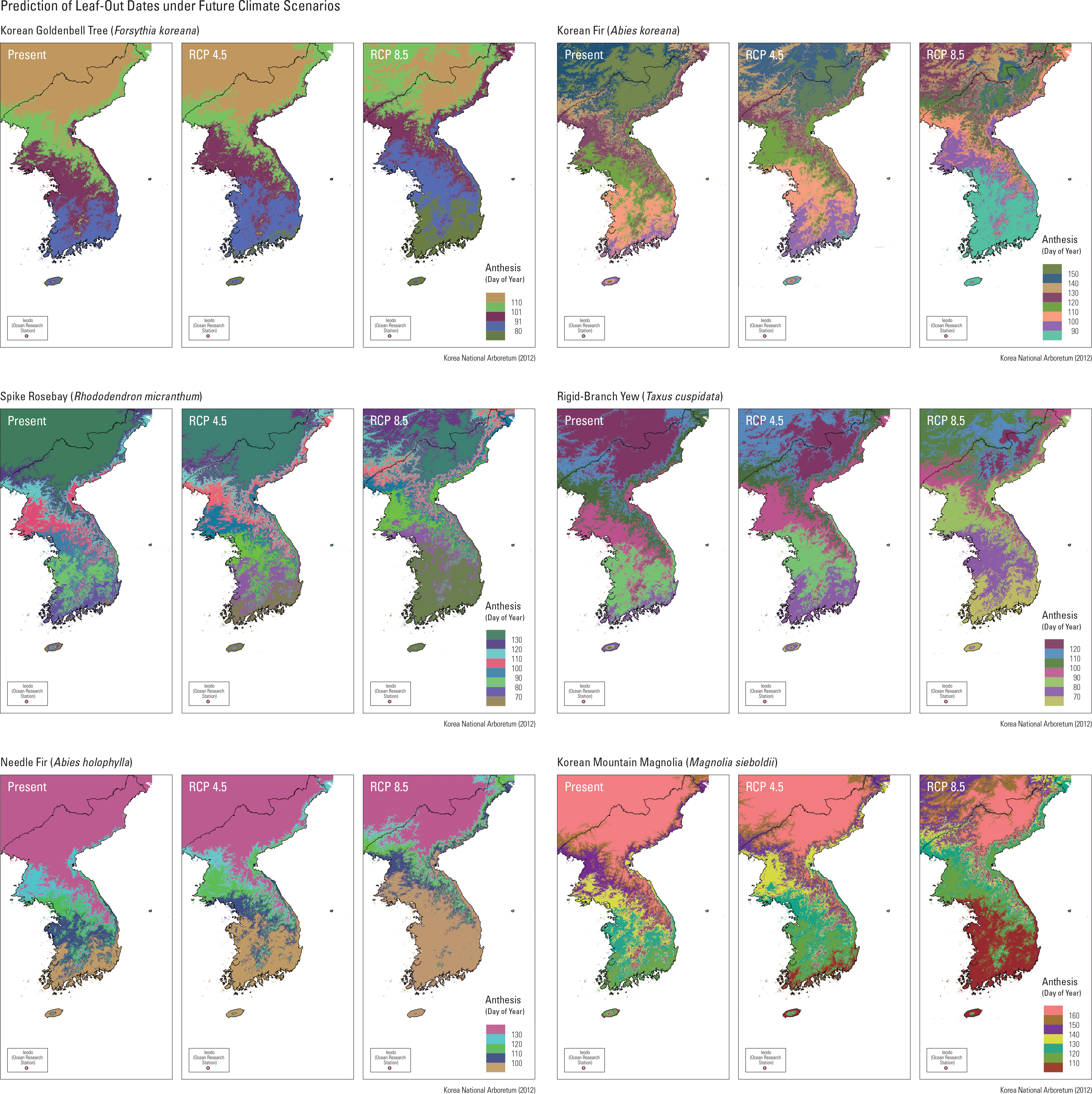English II
As the temperature increases, the vegetation zone of the Northern Hemisphere is moving from the south to the north and from lowlands to high- lands. An increase by 1 ̊C is expected to cause a migration of plants of middle latitude by 150 km to north and 150 m higher in altitude, causing dif culties for most plant species to keep up with the speed of climate change. Thus, the chance of extinction or shrinkage of habitat for plants increases. Detection of changes are possible by observing the microclimate, seasonal variations, and physiological changes of plants’ blooming and bearing fruit through long-term monitoring. Since 2009, the Korea National Arboretum has been carrying forward an adaptation plan for forest plant species that are susceptible to climate change. The plan, which builds regional microclimate change data, designates 100 climate change vulnerable species and monitors them af- ter classifying them into either northern or south- ern species. Plant species will physiologically be in uenced by climate change. Habitat change and distribution area change are predicted as conse- quences of interspecific competition. Thus, new endangered plant species are likely to appear be- cause of global warming. In the case of seasonal variation of plant phe- nology, the winter bud burst season and leaf un- folding season of rigid-branch yew (Taxus cuspi- data) and Korean r (Abies koreana) are expected to start earlier. Highland plants inhabiting the summits of Hallasan, Jirisan, and Seoraksan such as Korean fir (Abies koreana), dark-bark spruce (Picea jezoensis), Korean crowberry (Empetrum nigrum), rigid-branch yew (Taxus cuspidata), Khingan fir (Abies nephrolepis), Korean arbor- vitae (Thuja koraiensis) are expected to decrease in population. Conservation of northern plants living in isolated environments such as alpine, sub-alpine, islands, and wind holes is becoming an important issue.
page_2 |
